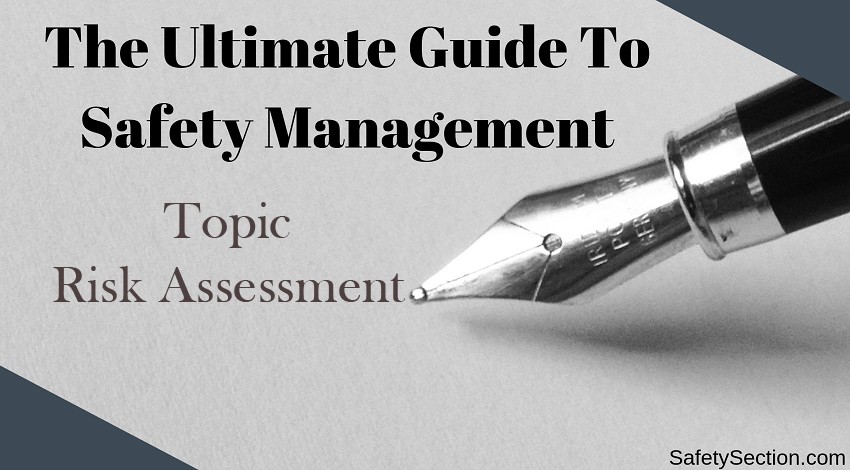Risk assessment is a crucial process in any business or project that helps identify potential threats and vulnerabilities. Calculating the risk assessment involves a systematic approach to evaluating the likelihood and impact of various risks. In this guide, we’ll delve into the key components of risk assessment and provide insights into the calculation formula.
Understanding Risk Assessment:
- Risk Identification:
- Begin by identifying potential risks that could impact the project or business. These risks may include financial, operational, technical, or environmental factors.
- Risk Analysis:
- Analyze each identified risk by assessing its likelihood of occurrence and the potential impact it could have. This involves qualitative and quantitative analysis.
Calculation Formula:
The formula for calculating risk is often expressed as:
- Probability:
- Probability refers to the probability or chance of a risk event occurring. It is typically expressed as a percentage or on a scale (e.g., low, medium, high).
- Consequence:
- Consequence represents the potential consequences or severity of a risk event if it were to occur. Consequence can be measured in terms of financial loss, project delays, reputation damage, etc.
Quantitative vs. Qualitative Risk Assessment:
- Quantitative Risk Assessment:
- In quantitative assessment, numerical values are assigned to the probability and consequence. This approach provides a more precise calculation, often using metrics such as monetary values or specific timeframes.
- Qualitative Risk Assessment:
- Qualitative assessment involves subjective evaluations, often using descriptive terms (e.g., low, medium, high) to assess probability and consequence. While less precise, qualitative assessment is valuable for understanding the overall risk landscape.
Risk Matrix:
- Creating a Risk Matrix:
- A risk matrix is a visual tool that combines the probability and consequence assessments to categorize risks into different levels of severity. The matrix helps prioritize risks and determine appropriate risk response strategies.
Risk Response Strategies:
- Risk Mitigation:
- Implement measures to reduce the probability or consequence of identified risks.
- Risk Transfer:
- Transfer the risk to a third party, such as through insurance or outsourcing.
- Risk Acceptance:
- Accept the risk if its impact is deemed manageable or if mitigation measures are not cost-effective.
Continuous Monitoring and Review:
- Dynamic Process:
- Risk assessment is not a one-time task. Regularly monitor and review the risk landscape as conditions change, ensuring that new risks are identified and existing ones are reassessed.
A Simple Functional Framework

Function – 1
Following the Established Standards:
- Accord Standard
- Alliance Standard
- Fire Service Rules and Act
- Building Construction Act
- Labor Act
- Buyer Code of Conducts
- International Relevant Laws and other local Laws.
Function – 2
Develop a “Check List” based on Function-1
|
Risk Assessment Checklist Parameter |
|
| General Risk | Training |
| Electrical Risk | Housekeeping |
| Chemical Risk | PPE |
| Machineries Risk | Documentation Risk |
Function – 3
- Identify the Fire Hazards
- Identify the People at Risk
- Evaluate the Hazards and Risk
- Record findings
- Review and Revise
Quantitative Risk Assessments Formula
Risk = Probability (P) x Consequence (C)
Risk Score = P x C
|
P |
C |
||
| Very low | 1 | Negligible | 1 |
| Low | 2 | Low | 2 |
| Moderate | 3 | Moderate | 3 |
| High | 4 | Severe | 4 |
| Very high | 5 | Catastrophic | 5 |
Risk Prioritization – Likelihood and Impact
Likelihood of a risk event occurring (P)
- Very High: is almost certain to occur = Point-5
- High: is likely to occur = Point-4
- Medium: is as likely as not to occur = Point-3
- Low: may occur occasionally = Point-2
- Very Low: Unlikely to occur = Point-1
Risk Impact (C)
- Very High: Ultimate threat = Point-5
- High: Substantial impact on the cost or safety = Point-4
- Medium: Notable impact on time, cost, or safety = Point-3
- Low: Minor impact on time, cost, or safety = Point-2
- Very Low: Negligible impact = Point-1
Risk Assessment Calculation Formula
Assessing The Risk Based On the Matrix Model
Quantitative risk assessment involves making a formal judgment on the consequence and probability using:

Risk Assessment Example Event

General Risk Score
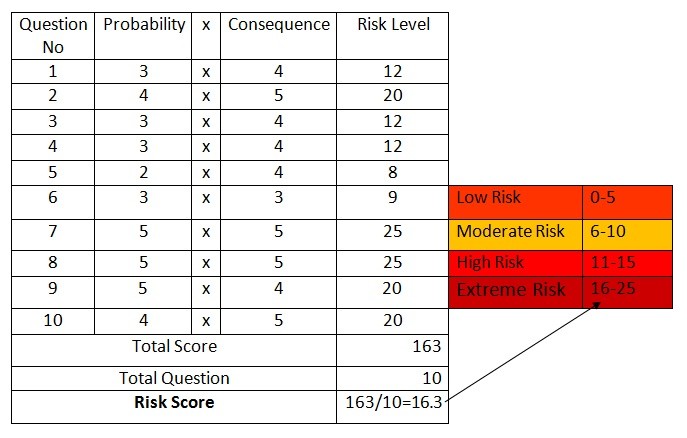
Electrical Risk Score
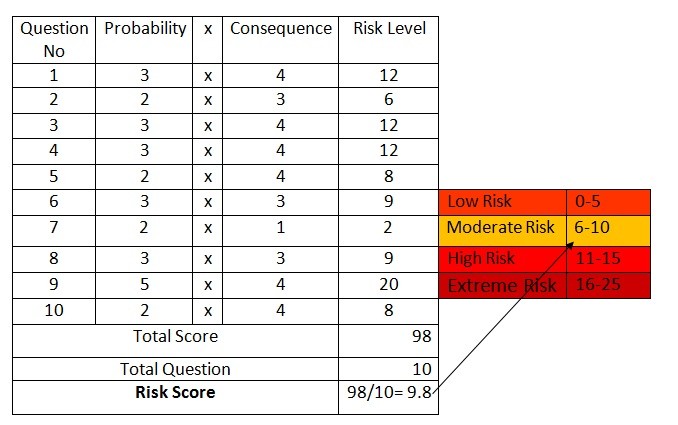
Chemical Risk Score

Machineries Risk Score

Training Risk Score
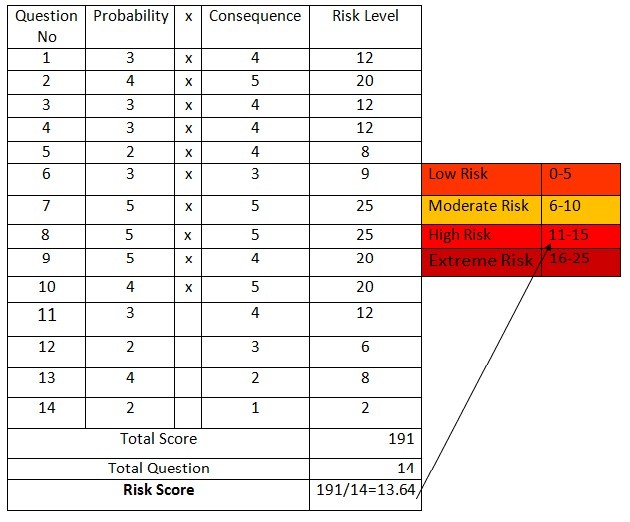
Housekeeping Risk Score

PPE Risk Score
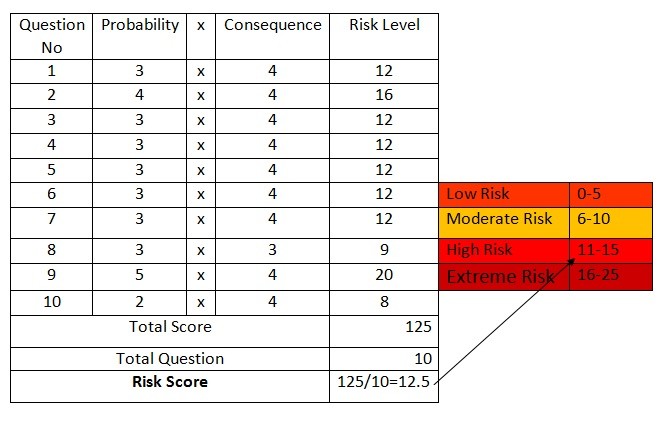
Documentation Risk Score

Segment Wish Risk Condition

At a Glance Factory Risk Level


Conclusion
Understanding the risk assessment calculation formula is fundamental to effective risk management. By systematically evaluating the likelihood and impact of potential risks, businesses and projects can make informed decisions, prioritize actions, and ultimately enhance their resilience in the face of uncertainty.
Related Resources:
- Hazards and Risks Definition
- Welding Hazards and Risk Management
- The 5 Key Elements of a Successful Incident Action Plan
- Effective Building Safety Management System
- Health and Safety Signs and Their Meanings
- Methods Of Hazard Identification

